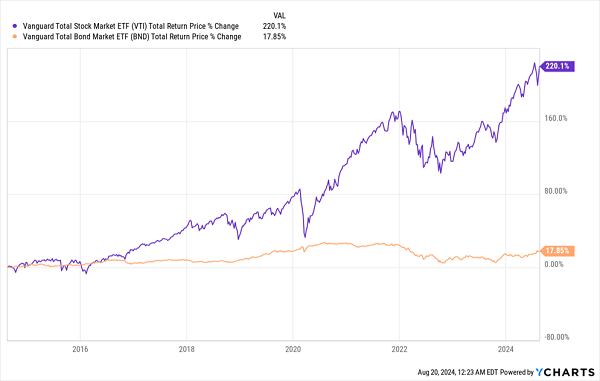Investment Strategist
This “Retro” Investment Pays 10.9% (And It’s Cheap Now)
Michael Foster, Investment StrategistUpdated: September 5, 2024
The spike in volatility we’ve seen in the last month has gotten me thinking a lot about the last decade—when bonds were a bust and tech ruled the day.
Put yourself back in that (seemingly innocent) time for a second.
If you had money to invest back then, you had one choice: stocks. With rock-bottom interest rates, bonds were a bust. And stocks—particularly tech stocks, which tend to do better when rates are low—soared.
You can clearly see the massive scale of the 2010’s tech surge in the chart below, with tech shown by the benchmark ETF for the sector, in purple.… Read more

